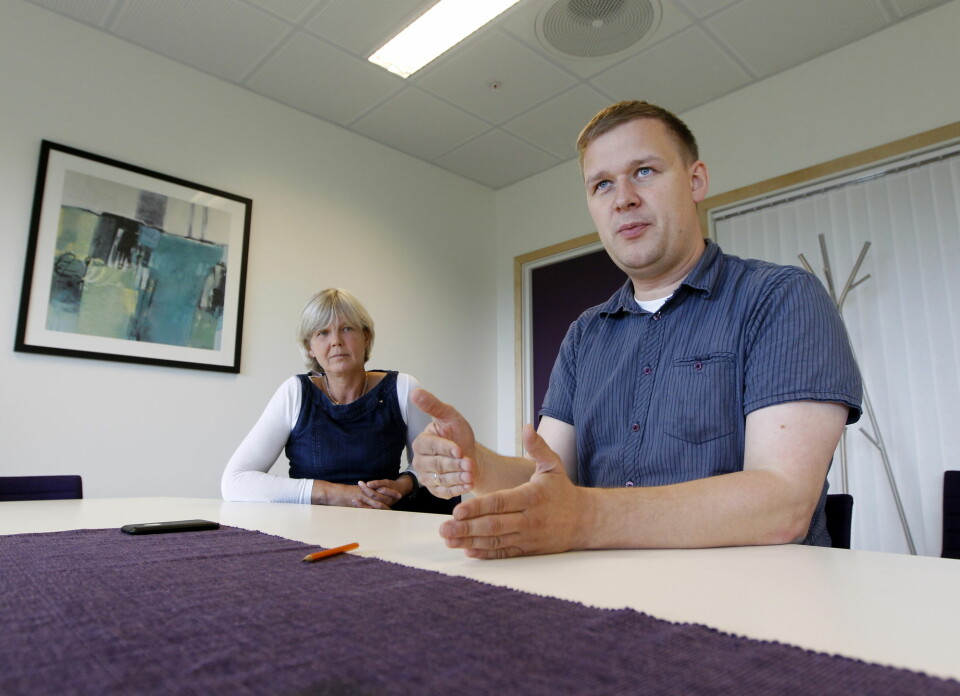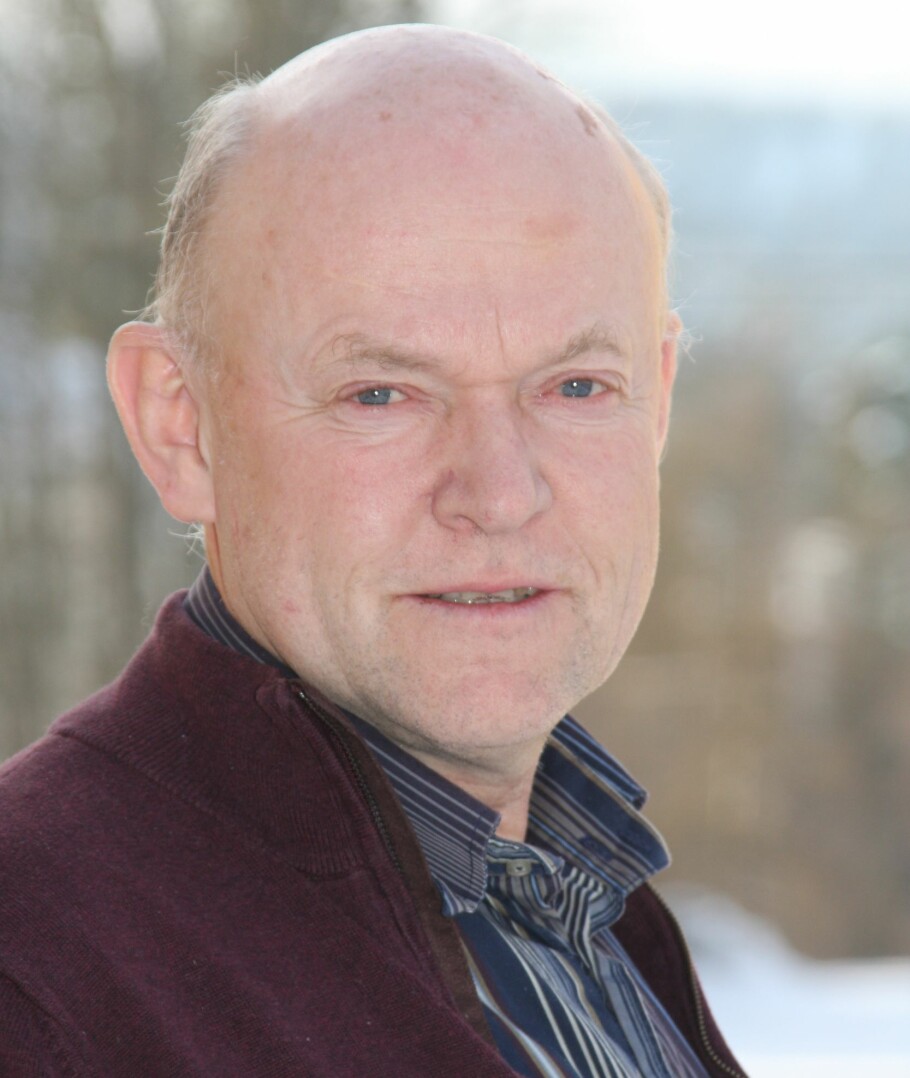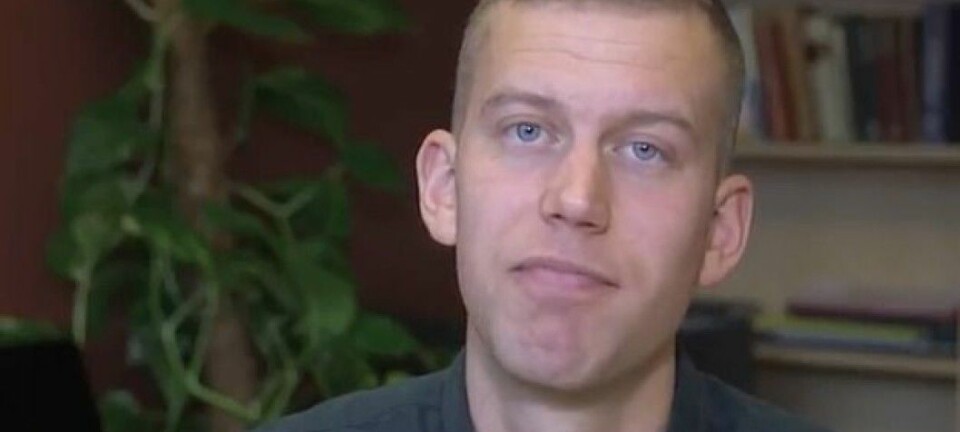
This is how they treat obsessive-compulsive disorder — in 4 days
Gerd Kvale and Bjarne Hansen have had great success with their four-day treatment programme for obsessive-compulsive disorder. They think the general trend towards shorter treatment programmes is long overdue.
Maybe you've suddenly thought "what would it be like if I pull the car into oncoming traffic right now"?
Or you check to see if the front door is locked — for the third time. Or you knock on wood after saying something is going well, so that your statement won’t challenge fate.
This is all normal. But for some people, odd thoughts become so invasive that they avoid driving a car, they check everything in the house again and again, or constantly feel the urge to neutralize thoughts so that they do not become reality.
Psychologists and professors Gerd Kvale and Bjarne Hansen have developed a treatment program that helps patients get rid of their obsessive-compulsive disorder, also called OCD, in four days.
Not surprisingly, the short treatment time has attracted some attention.
The Bergen 4-Day Treatment has been exported to several other countries and is currently used by teams all over Norway.
“When we started this, we didn’t know how the effect would last over the long term. A few years ago, we thought it was scary to say that people could get healthy in four days,” Kvale said recently on the Kavli Trust podcast (in Norwegian) Tech, Håp & Kjærlighet (Tech, Hope & Love).
“Now, more than 2000 people have been helped. The articles we have published show that 90 per cent have clear improvement after four days. Four years later, 70 per cent no longer suffer from the disorder and are living normal lives,” Kvale said.
Gerd Kvale and Bjarne Hansen are now studying whether the short-treatment model can work for other anxiety-related disorders, such as panic disorder, generalized anxiety and social anxiety.
“We will use the same principles,” Kvale says to ScienceNorway.no.
Concentrated treatment
It’s commonly accepted that mental disorders require long-term treatment — often several months of talk therapy or prolonged use of medication. Is this about to change?
“Concentrated treatment allows us to shift from periodic treatment, and cuts the breaks. There’s interesting research that suggests this has some advantages,” says Hansen.
“The assumption has probably been that little drips of treatment allow people to process ideas in between. In reality, however, the results seem to be the opposite, that the time in between disrupts the process, and the little drips are too small,” he says.
Practical reasons
Asle Hoffart is a psychologist and researcher at the Modum Bad Psychiatric Center and a senior researcher at the University of Oslo.
He’s not aware of any specific widespread theory that says patients have to have time to process ideas between small bits of therapy, but suggests this concept could be related to "patient-centred therapy", where the idea is that change can only occur when the patient is ready for it.
"An hour a week has probably come about because it is convenient for both the therapist and the patient," Hoffart writes in an email.
He also says that it is reasonable that the time between sessions can be disruptive.
“Anxiety disorders are a battle between a patient’s ‘old plan’ and ‘new plan’. The patient’s old plan helps them avoid anxiety and situations that create anxiety. The old plan is very tempting as it provides immediate relief from discomfort,” Hoffart says.
“Therapy is about developing a ‘new plan’, in which the patient’s anxiety is challenged, and which allows the patient to experience coping, joy, and a decline in anxiety over time. The disadvantage of this approach is that it involves short-term discomfort, and the patient needs continuous support with their ‘new plan’. The more intensive and continuous the therapy, the better, I believe,” he says.
Out of the therapy room
Under Hansen and Kvale’s four-day model, exposure is an important part of the treatment. This means patients have to go out of the therapy room and expose themselves to what they fear most.
When we avoid what we fear, we teach the brain that this is a smart approach. Someone with this disorder finds ways to avoid what causes discomfort and creates strategies to curb anxiety. This actually feeds their fear.
“These principles have been known since the 1960s. But this research has not reached the patients,” says Kvale.
At the four-day courses, patients are first taught about anxiety disorders. They then practice in difficult situations with the therapist. They continue to practice in the evening on their own, and are followed up by phone and SMS.
Someone who is terrified of germs may need to grab the handle in a public toilet and spread dirt around the house while she or he listens to audio recordings with frightening thoughts like, “now you'll get sick and infect your family”.
Touching dirty things and meaning it
But this is not just about touching a dirty toilet handle and expecting it to cure your fear.
If you simply touch the dreaded toilet handle just to get it over with, and reassure yourself by thinking that the sink is right nearby, that’s not enough.
“Touching the handle is just a procedure. I ask the patient: Are you touching it now, but really don’t want this to be happening? Because if you do that, you’re keeping to your own project and acting like it's dangerous. Then you’re sending the wrong signals,” says Hansen.
“You have to recognize your own project, what you want to avoid. It's not about whether you're willing to jump, but whether you're also willing to let go of the parachute. The procedures are there to help the patient see the choice,” he says.
Deceptions and exceptions
People with an anxiety disorders make exceptions and trick themselves, says Hansen.
“For these individuals, the normal regulation of emotions, for some reason, is prohibited. Even though we know it’s ridiculous, what is at stake seems so important and serious. If you let go of this prohibition of emotions, which is about letting go, then you have shifted from being sick to normal, through completely normal psychological processes,” he says.
Hansen says there are similarities and differences between the various anxiety disorders.
“You have a package of symptoms that are transdiagnostic, and which are based on basic mechanisms. Then there are the specific ways in which people fool themselves,” he says.
Hansen says every patient has to figure out where they are willing to make an exception. Where is it that they decide they won’t enter a landscape, here they won’t make an exception?
A person with a panic disorder, for example, may be afraid of having a heart attack, or of having seizures while shopping in a store. A person with social anxiety, however, will do everything to avoid taking a bus, or to avoid situations where he or she gets attention.
Change is within reach
“When it comes to an anxiety disorder, change is within reach. It is possible to move beyond this and get a normal life back,” says Kvale.
She believes the general trend in psychology has been towards more concentrated treatment courses.
“From the time when psychological treatment was almost only about long-term conversation therapy, to where we are now, there have been formidable advances. I think the paradigm shift is in full swing already,” she says.
“It’s a real benefit for patients. Having to go through years of treatment, which may prove to be of very limited value in enabling someone to be able to move forward, is thought-provoking, to put it mildly,” she says.
Intensive treatment can work
Hans Nordahl is a professor in the Department of Mental Health at the Norwegian University of Science and Technology (NTNU).
He confirms that it is possible to recover from OCD and other anxiety disorders in a short time.
“The 4-day programme has shown that treatment can be offered in an intensive way,” he says.
But he adds it doesn't necessarily mean that the outcome is better, and would like to see comparative studies of the four-day model for OCD with other effective treatments.
“A pilot study has been done on the 4-day model for panic disorder — but it is too early to say whether this treatment has an effect on panic disorder or other anxiety disorders,” he says.
Some people need more time

Patrick A. Vogel is professor emeritus at NTNU’s Department of Psychology. He studies treatments for anxiety, depression and personality disorders. Vogel is familiar with Kvale and Hansen’s work.
"They deserve praise for coming up with a new approach to treat anxiety disorders," Vogel says.
“OCD treatment has been offered in an intensive way before, but not as intensive as four days. Clearly it’s preferable for the patient to finish treatment over a short period, if that’s possible. I know that a four-day approach to panic disorder has been used for some time as well, and with good results,” said Vogel.
However, some people will need longer treatment, says the professor.
“Early trauma, for example, is not so easy to treat, but it’s good nevertheless to help the patient shed their compulsive symptoms, so that treatments can be given a try. But there must be offers for patients who need more time, too,” he says.
Reason to rethink
Vogel has done his own research project with social anxiety in which he was able to make a great deal of progress with eight hours of metacognitive therapy. Symptoms were halved and 50 per cent of patients no longer met the clinical definition for the diagnosis.
Metacognitive means thinking about thinking, and metacognitive therapy focuses on changing beliefs that perpetuate the patients state of anxiety.
“There is certainly reason to think differently when it comes to a number of other kinds of mental disorders,” says Vogel.
He says much has changed over the last 10 - 20 years.
“Norway has been conservative when it comes to treatments for anxiety. There has been a strong psychodynamic tradition,” he says.
Vogel says it was common to think of anxiety symptoms as somewhat superficial, and that they just reflected real, internal conflicts that needed to be resolved.
He said that meant many people had a hard time accepting that anxiety behaviours and poor coping strategies on their own were worth doing something about, as a full focus of treatment.
But many people who have problems with human relationships and work may be better off if they are able to do something about their anxiety symptoms.
“You don't necessarily have to do anything about the conflicts behind these symptoms,” says Vogel.
Broke with tradition

Psychologist Asle Hoffart says a short version of cognitive therapy for PTSD - post traumatic stress disorder - has also been developed. A 7-day schedule of 2-4 hours each day has proven to be as effective as the standard three-month version.
“Starting in 1992, we introduced a 5-week programme at Modum Bad Psychiatric Center to treat panic disorder with agoraphobia, with anxiety exposure and conversations before and after every day for three weeks. There were home assignments on the weekends. The results were good,” he says.
At that time, Hoffart said, it was widely believed, including at Modum Bad, that anxiety had an underlying problem that also had to be addressed.
“This kind of ideology is probably still around today. The 5-week programme broke with traditions, it focused only on anxiety,” he says.
Opened research centre
The Bergen Center for Brain Plasticity opened in September 2019, with Gerd Kvale as director and Bjarne Hansen as deputy head.
The goal is to find out more about what constitutes effective treatment for anxiety and obsessive-compulsive disorders, and how the brain changes —or not — with therapy.
The centre has attracted experts in brain imaging, epigenetics and genetics.
“We will collect data from thousands of patients, where we have control over what has happened. It will be a unique contribution with so many angles on the same research, and we’ll be able to do this at a high volume,” Hansen says.
“I have no idea where it will lead us. Which is pretty cool, he says.
Hansen thinks this type of research is needed to move the field forward and gain a better understanding of the mechanisms behind mental disorders.
“We know that the disorders are related to the brain, the processing is not happening in your big toe. But from there to be able to start seeing which networks are involved, how the different networks collaborate, and what happens when there is change or not, is pretty interesting,” he says.
“But it’s important that we don’t join the ranks of people who become believers,” Kvale says.
“It is in the nature of research that we always have to challenge things and be curious, and also be critical of our own research — and in doing so, to always be progressing,” she says.
———
Translated by: Nancy Bazilchuk


































